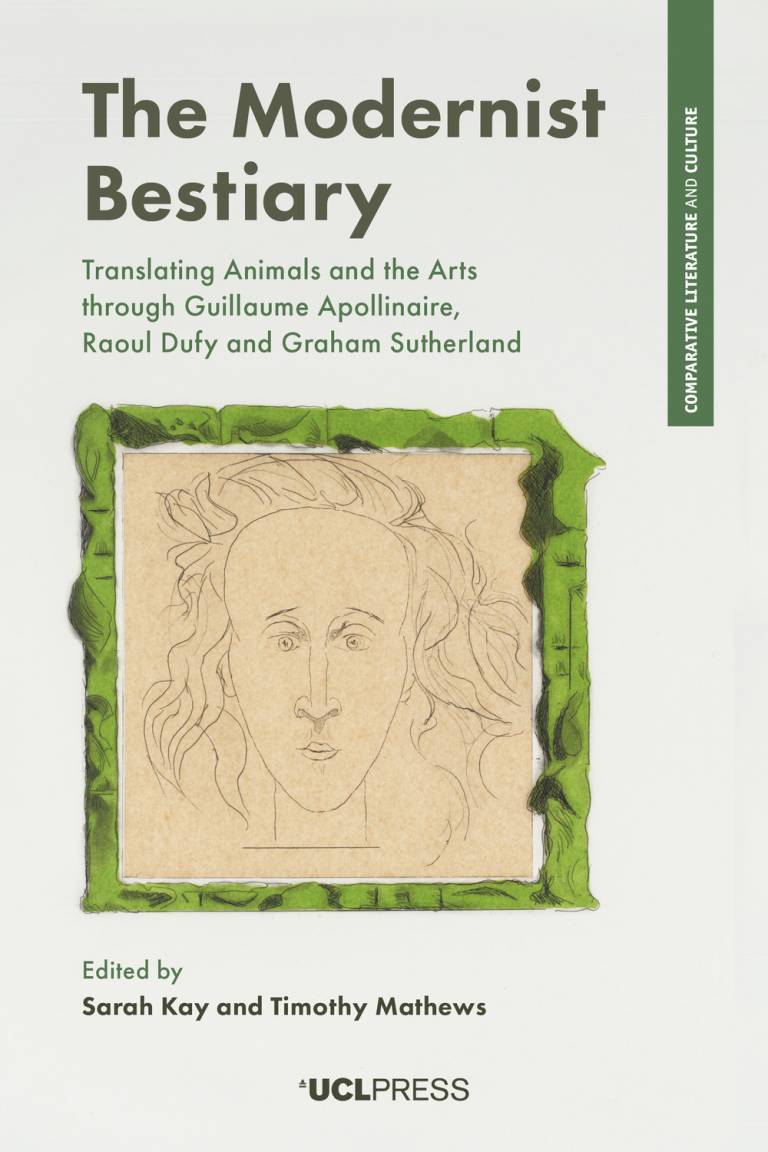"The Modernist Bestiary" (Sarah Kay & Timothy Mathews) available now
27 August 2020

Congratulations to Sarah Kay & Timothy Mathews on the publication of 'The Modernist Bestiary: Translating Animals and the Arts through G. Apollinaire, R. Dufy and G. Sutherland'!
Download it for free at UCL Press
The Modernist Bestiary centres on Le Bestiaire ou Cortège d’Orphée (1911), a multimedia collaborative work by French-Polish poet Guillaume Apollinaire and French artist Raoul Dufy, and its homonym, The Bestiary or Procession of Orpheus (1979), by British artist Graham Sutherland. Rather than reconstructing the lineage of these two compositions, the book uncovers the aesthetic and intellectual processes involved that operate in different times, places and media. The Apollinaire and Dufy Bestiary is an open-ended collaboration, a feature that Sutherland develops in his re-visiting, and this book shows how these neglected works are caught up in many-faceted networks of traditions and genres. These include Orphic poetry from the past, contemporary musical settings, and bestiary writing from its origins to the present. The nature of productive dialogue between thought and art, and the refracted light they throw on each other are explored in each of the pieces in the book, and the aesthetic experience emerges as generative rather than reductive or complacent.
The contributors’ encounters with these works take the form of poetry and essays, all moving freely between different disciplines and practices, humanistic and posthumanist critical dimensions, as well as different animals and art forms. They draw on disciplines ranging from music, art history, translation, Classical poetry and French poetry, and are nurtured by approaches including phenomenology, cultural studies, sound studies, and critical animal studies. Collectively the book shows that the aesthetic encounter, by nature affective, is by nature also interdisciplinary and motivating, and that it spurs the critical in addressing the complex issues of 'humananimality'.
 Close
Close

